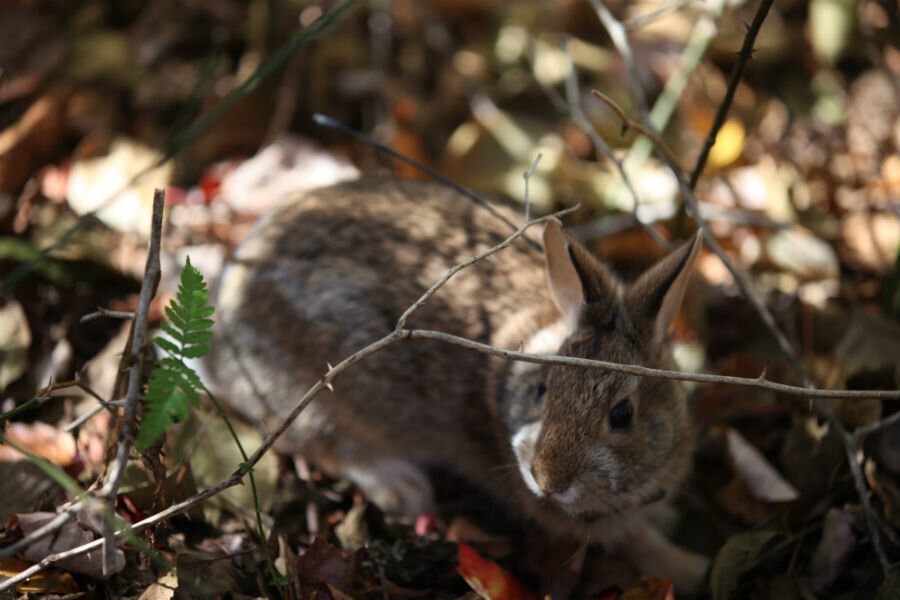Northeast United States will have new national wildlife refuge
Loading...
Americans will soon have a new national wildlife refuge to visit in five New England states and New York.
The Great Thicket National Wildlife Refuge, finalized by the US Fish and Wildlife Service (FWS) on Tuesday, includes 15,000 acres of land that mainly consists of shrubland teeming with as many as 136 types of animals and insects, according to the Associated Press, which includes the New England cottontails and American woodcock. It also hosts threatened and endangered species such as bog turtles and the Massachusetts's northern red-bellied cooter.
“National wildlife refuges provide Americans with incredible opportunities to experience nature at its finest,” Secretary of the Interior Sally Jewell said in a press release. “Great Thicket National Wildlife Refuge will give New Englanders and New Yorkers the chance to conserve important habitat in the region, ensuring current and future generations can experience the rich variety of animals and plants that call these special places home.”
This new refuge is a continuation of President Obama’s streak in holding the record for protecting the most public land and water of any past president. It will be the 18th created under his administration since 2009 and the 566th in the nation, joining a network of protected areas covering over 150 million acres of land. It also increases the amount of land under FWS’ purview. In August, Obama expanded the Papahānaumokuākea Marine National Monument in Hawaii to become the world’s largest marine protected area that spans two wildlife refuges.
“With this expansion, the U.S. Fish and Wildlife Service now manages the largest system of lands and waters set aside for the conservation of wildlife and wild places” Service Director Dan Ashe said in a press release then. “No other entity on this planet can make that claim (or even comes close).”
Development activities in these areas are prohibited, but public use of the land for hunting, fishing, wildlife observation, and education are welcome. According to the FWS, these wildlife refuges are visited 47 million times a year, becoming an important source of revenue for local communities, thus drawing in collaboration from various levels of government.
“The Great Thickets Project really started as all great projects do — pretty much at the grassroots level,” Scott Kahan, the agency’s chief of refuges for the Northeast, told Maine Public Broadcasting Network, commenting on how the agency partnered with six state wildlife agencies and local governments. “When we think about providing habitat for wildlife, we really need to think about it in terms of these bigger geographies, in terms of where that habitat needs to be located to help protect and to keep some of these common species common and to help recover some of the ones that are more rare.”
When the plan was first made available for public review in early 2016, it drew more than 6,000 comments. According to FWS, more than 90 percent were positive, including letters of support from thousands of individuals from the National Audubon Society and Defenders of Wildlife. The former commended the plan for addressing the “alarming rates” of decline in populations of shrubland birds while the latter touched on economic benefits of the refuge.
“Great Thicket NWR would also provide Northeasterners with new wildlife viewing and recreation opportunities and would aid our local economy by attracting birdwatchers and other visitors to our region,” they wrote.
Of course, it also drew comments that highlighted general wariness of federally-controlled land, alleging “intrusion of federal directives and control” as a “greater concern.”
The economic potential of the refuge was highlighted by the service. Referring to a 2013 national report, spending by refuge visitors generated nearly $343 million in local, county, state, and federal tax revenue in 2011 while supporting more than 35,000 jobs.
“National wildlife refuges do not just benefit wildlife. They are strong economic engines for local communities across the country,” according to the report.
For the refuge to materialize, the next step for FWS is to acquire land from willing landowners in non-contiguous areas in Connecticut, Maine, Massachusetts, New Hampshire, New York, and Rhode Island. According to the Associated Press, the officials say they plan to purchase half of the land targeted while obtaining the other half through conservation easement.
The process could take decades, as the press release points out. It is entirely up to landowners to decide if they want to sell or donate their land to become part of the refuge. They could also opt for conservation easement, where the owners permanently sell property rights to FWS that restricts the types of activities that can be done on the land.
The funds used to purchase these lands will not be from federal tax dollars but from two buckets of funds set up by Congress, drawing revenue from offshore oil and gas drilling royalties and sale of Federal Duck stamps amongst other things.








